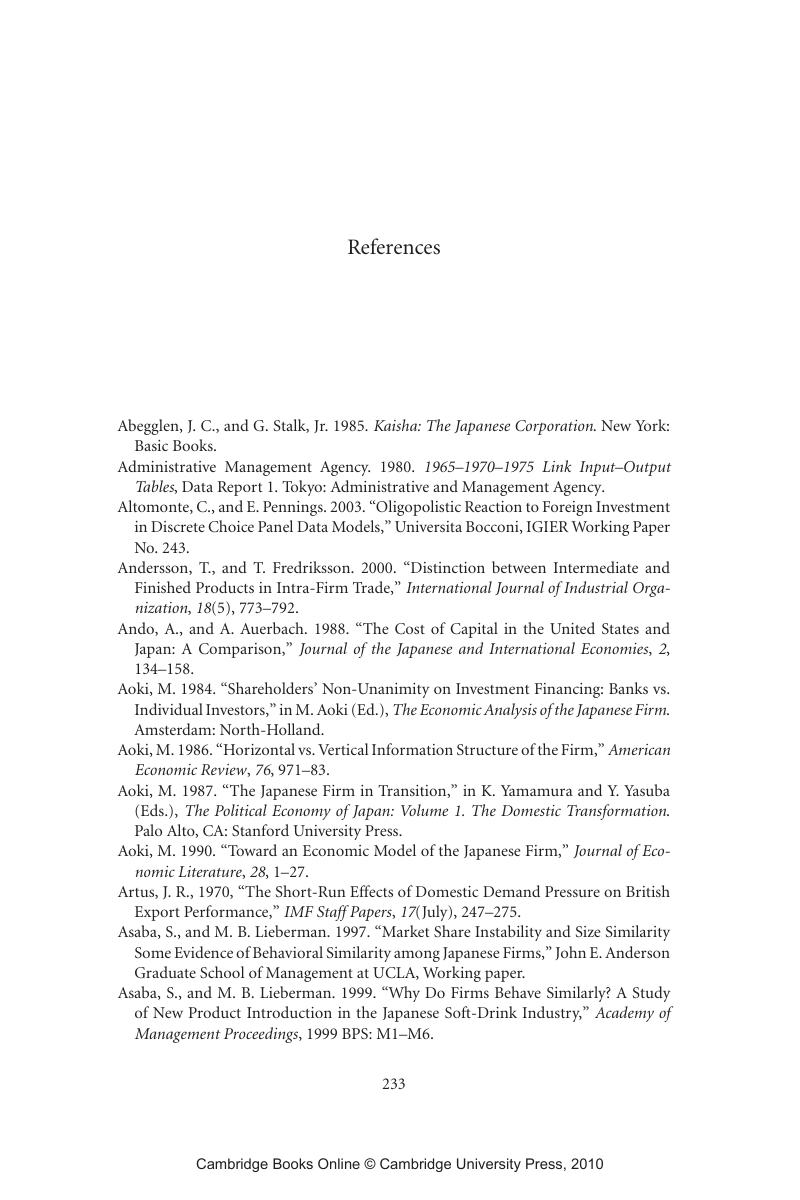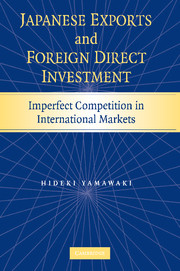Book contents
- Frontmatter
- Contents
- Tables
- Figures
- Preface
- 1 Introduction
- 2 Export Pricing Under Imperfect Competition
- 3 Export Price, Learning, and Domestic Demand Disturbances
- 4 Foreign Market Structure, Export Price, and Profitability
- 5 Competitive Advantage and Export Performance
- 6 Entry in the European and U.S. Manufacturing Industries
- 7 Strategic Interactions in Cross-Market Entry
- 8 Responses of Foreign Firms to Japanese Competition
- 9 Exit in the U.S. Manufacturing Industries
- 10 Interpreting the Empirical Findings
- 11 Implications
- Appendixes
- References
- Index
- References
References
Published online by Cambridge University Press: 08 January 2010
- Frontmatter
- Contents
- Tables
- Figures
- Preface
- 1 Introduction
- 2 Export Pricing Under Imperfect Competition
- 3 Export Price, Learning, and Domestic Demand Disturbances
- 4 Foreign Market Structure, Export Price, and Profitability
- 5 Competitive Advantage and Export Performance
- 6 Entry in the European and U.S. Manufacturing Industries
- 7 Strategic Interactions in Cross-Market Entry
- 8 Responses of Foreign Firms to Japanese Competition
- 9 Exit in the U.S. Manufacturing Industries
- 10 Interpreting the Empirical Findings
- 11 Implications
- Appendixes
- References
- Index
- References
Summary

- Type
- Chapter
- Information
- Japanese Exports and Foreign Direct InvestmentImperfect Competition in International Markets, pp. 233 - 252Publisher: Cambridge University PressPrint publication year: 2007



